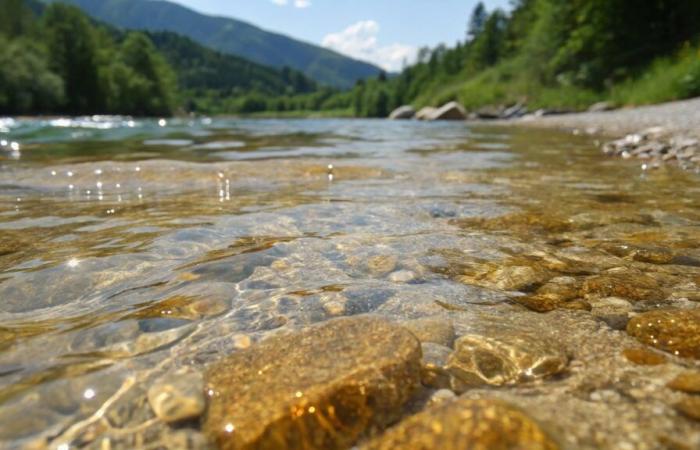Since ancient times, the oro It has been much more than a precious metal, since it has become a universal symbol of power, wealth and desire.
This element has drawn the attention of entire civilizations, inspiring expeditions, wars and myths. However, in the 21st century, when many believed that the big veins had remained in history, a small corner of Asturias It becomes an unexpected protagonist.
The finding has caused a stir in Italy, where media such as Modena time page They have not hesitated to qualify it as «The discovery of the century». And really, it’s not for less.
A river full of gold that keeps alive the mining tradition in Asturias
The protagonist is the río Navelgasthat hides a secret capable of surviving the passage of the centuries. Every year, the small Asturian town is filled with enthusiasm with the celebration of the World Gold Batery Championship, an event in which fans and experts compete to find the largest number of golden particles in the shortest possible time.
Although, in reality, beyond the competition, what happens in Navelgas is a real cultural festival. The streets are filled with activities, workshops and demonstrations that They relive a mining tradition whose roots sink into Roman times.
It is curious to think about the amount of gold that is still in the river bed, and how that mining identity has established itself between tourists and adventurers
Why is the gold of the Navelgas river a unique geological phenomenon?
The gold that drags the navelgas has its origin in the Asturian mountains that surround it. For thousands of years, natural erosion has released small particles that, pushed by the current, have been deposited between the sand and the stones of the background.
It is not an easy task to find the gold particles. It requires patience, technique and a trained eye, since the tiny scales hide in the sediment.
The Romans already knew the value of these lands and exploited their large -scale wealth, using various hydraulic mining techniques to extract the gold from the mountains. Today, that inheritance is still alive in each bat that sinks into the cold waters of Navelgas.
Where does gold come from?
The gold that we find today in rivers such as the Navelgas did not be born on earth, but its origin dates back to cosmic explosions: lAS Supernova.
When massive stars collapse, the extreme temperature and pressure conditions allow the heavy metal formation such as gold. Subsequently, these materials traveled in meteorites to our planet during their formation.
Thus, the gold was caught in the nucleus and the earth’s crust. With the passage of time, processes such as erosion, volcanic activity and earthquakes helped release fragments that today end up in rock veins or dragged by rivers.
That is why every little Pepita found at the bottom of Navelgas comes, in theory, of space.






